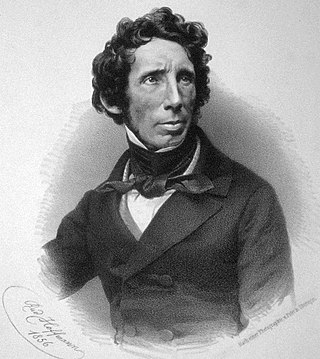
Friedrich Wöhler FRS(For) HonFRSE was a German chemist known for his work in both organic and inorganic chemistry, being the first to isolate the chemical elements beryllium and yttrium in pure metallic form. He was the first to prepare several inorganic compounds, including silane and silicon nitride.
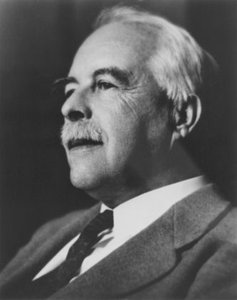
Gilbert Newton Lewis was an American physical chemist and a dean of the college of chemistry at University of California, Berkeley. Lewis was best known for his discovery of the covalent bond and his concept of electron pairs; his Lewis dot structures and other contributions to valence bond theory have shaped modern theories of chemical bonding. Lewis successfully contributed to chemical thermodynamics, photochemistry, and isotope separation, and is also known for his concept of acids and bases. Lewis also researched on relativity and quantum physics, and in 1926 he coined the term "photon" for the smallest unit of radiant energy.

Ira Remsen was an American chemist who introduced organic chemistry research and education in the United States along the lines of German universities where he received his early training. He was the first professor of chemistry and the second president of Johns Hopkins University. He founded the American Chemical Journal, which he edited from 1879 to 1914. The discovery of Saccharine was made in his laboratory by Constantine Fahlberg who worked in collaboration with Remsen but patented the synthesis on his own, earning the ire of Remsen.

Alexander Mikhaylovich Butlerov was a Russian chemist, one of the principal creators of the theory of chemical structure (1857–1861), the first to incorporate double bonds into structural formulas, the discoverer of hexamine (1859), the discoverer of formaldehyde (1859) and the discoverer of the formose reaction (1861). He first proposed the idea of possible tetrahedral arrangement of valence bonds in carbon compounds in 1862.
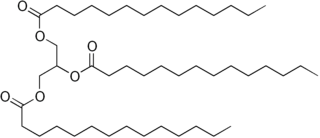
Trimyristin is a saturated fat and the triglyceride of myristic acid with the chemical formula C45H86O6. Trimyristin is a white to yellowish-gray solid that is insoluble in water, but soluble in ethanol, acetone, benzene, chloroform, dichloromethane, ether, and TBME.
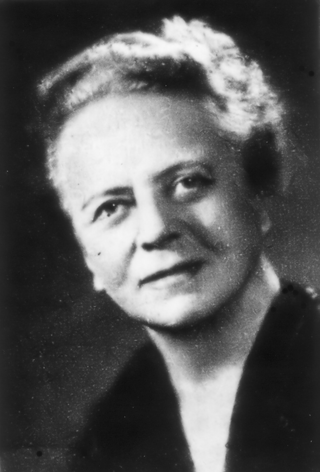
Ida Noddack, néeTacke, was a German chemist and physicist. In 1934 she was the first to mention the idea later named nuclear fission. With her husband Walter Noddack, and Otto Berg, she discovered element 75, rhenium. She was nominated three times for the Nobel Prize in Chemistry.

Robert Howard GrubbsForMemRS was an American chemist and the Victor and Elizabeth Atkins Professor of Chemistry at the California Institute of Technology in Pasadena, California. He was a co-recipient of the 2005 Nobel Prize in Chemistry for his work on olefin metathesis.
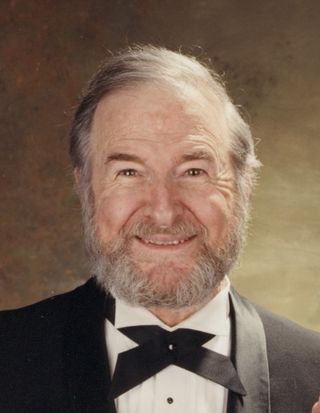
George Bernard Kauffman was an American chemist.
Cläre Hunsdiecker (née Dieckmann) (1903–1995) was a German chemist who worked with her husband Heinz Hunsdiecker (1904–1981) to improve a reaction of Alexander Borodin now known as the Hunsdiecker reaction. They received both US and German patents for the work.

Edgar Heilbronner was a Swiss German chemist. In 1964 he published the concept of Möbius cyclic annulenes, but the first Möbius aromatic was not synthesized until 2003.

Louis Eugene Brus is an American chemist, and currently the Samuel Latham Mitchell Professor of Chemistry at Columbia University. He is the co-discoverer of the colloidal semi-conductor nanocrystals known as quantum dots. In 2023, he was awarded the Nobel Prize in Chemistry.
Philippe A. Guye FRS was a Swiss chemist who was awarded the Davy Medal in 1921 "for his researches in physical chemistry".

The International Year of Chemistry 2011 was a year-long commemorative event for the achievements of chemistry and its contributions to humankind. The recognition for chemistry was made official by the United Nations in December 2008. Events for the year were coordinated by the International Union of Pure and Applied Chemistry (IUPAC), and by UNESCO, the United Nations Educational, Scientific, and Cultural Organization.
Niels Janniksen Bjerrum was a Danish chemist.
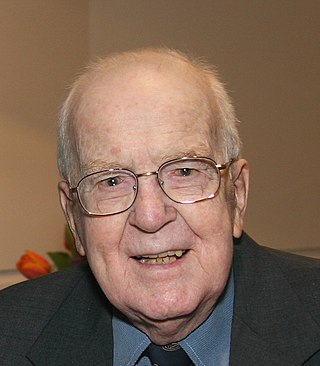
Foil Allan Miller was an American chemist and philatelist best known for his work in infrared and Raman spectroscopy. He was head of the spectroscopy division of the Mellon Institute and later professor and head of the spectroscopy laboratory at the University of Pittsburgh. Among other publications, he co-authored the books Course Notes on the Interpretation of Infrared and Raman Spectra (2004) and A Philatelic Ramble Through Chemistry (1998).
Jeffrey I. Seeman is a historian of science, chemist, and Visiting Senior Research Scholar in the Department of Chemistry at the University of Richmond in Richmond, Virginia. He is the editor of 20+ volumes in the series Profiles, pathways and dreams : autobiographies of eminent chemists. In addition to writing extensively as both a scientist and historian, he has produced short films for historical and educational use.

Ralph Edward Oesper was an American chemist and historian of chemistry. He is noted for his biographies of scientists, emphasizing their personal lives in addition to their scientific contributions. Oesper translated significant works in the field of chemistry to various languages especially English. As an independent investigator, he developed improved analytical methods. These contributions included new reagents for certain types of titrations. One such new reagent, Oesper's Salt, is named after him.
Henry Marshall Leicester was an American biochemist and historian of chemistry.

The depiction of mathematics on stamps began in 1923 with the issue of a set of three Polish stamps commemorating the 450th birth anniversary of the astronomer and mathematician Nicolaus Copernicus. As the definition of what constitutes a valid mathematical stamp is not universally agreed, some collectors make the case that the first mathematical stamp was the 1847 United States issue depicting the polymath Benjamin Franklin even though he was not primarily a mathematician; others prefer to recognize the 1926 German Leibniz stamp as the first depicting a mathematician.

The depiction of crystallography on stamps began in 1939 with the issue of a Danzig stamp commemorating Wilhelm Röntgen who discovered X-rays. Crystallographic stamps contribute to crystallography education and to the public understanding of science.































